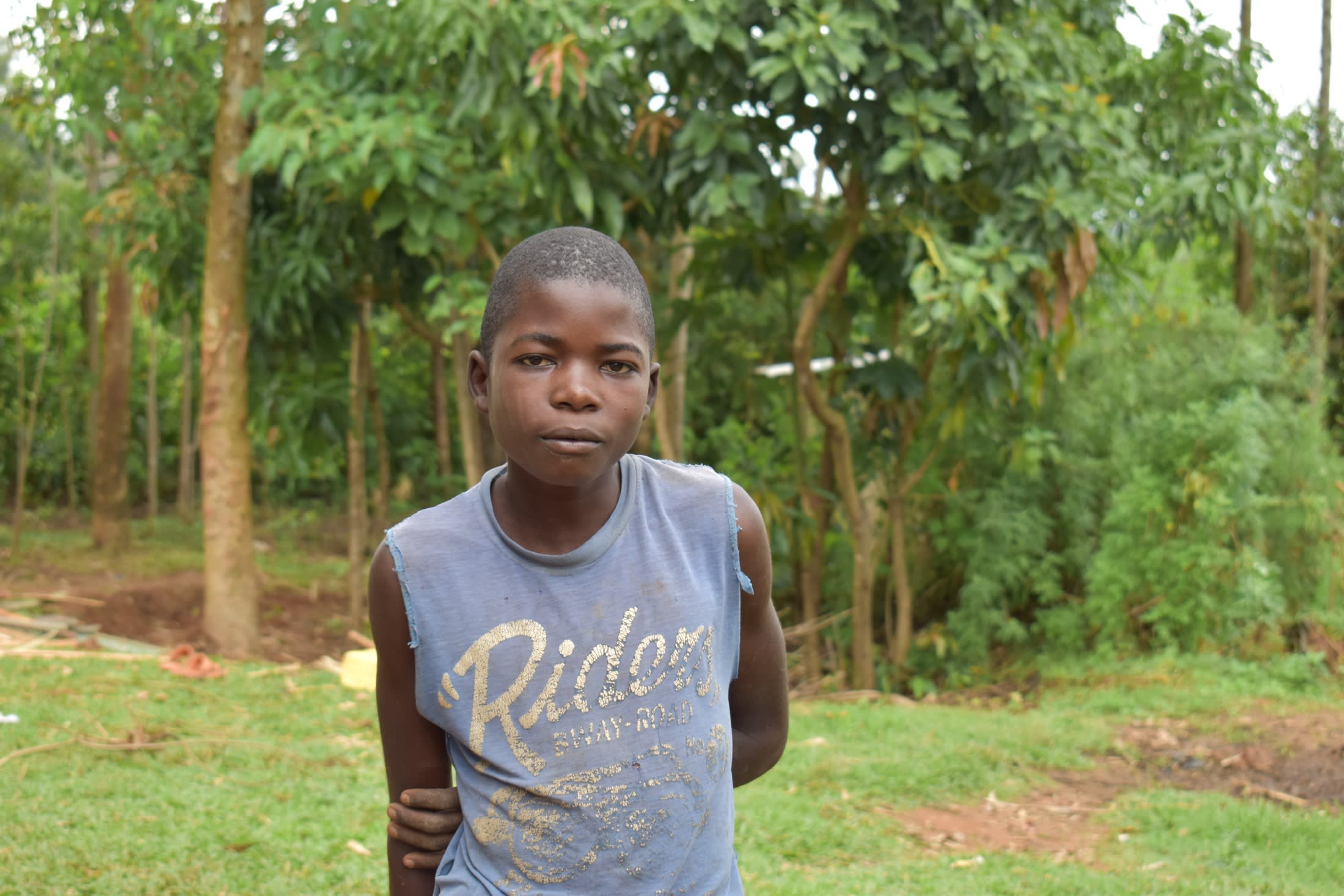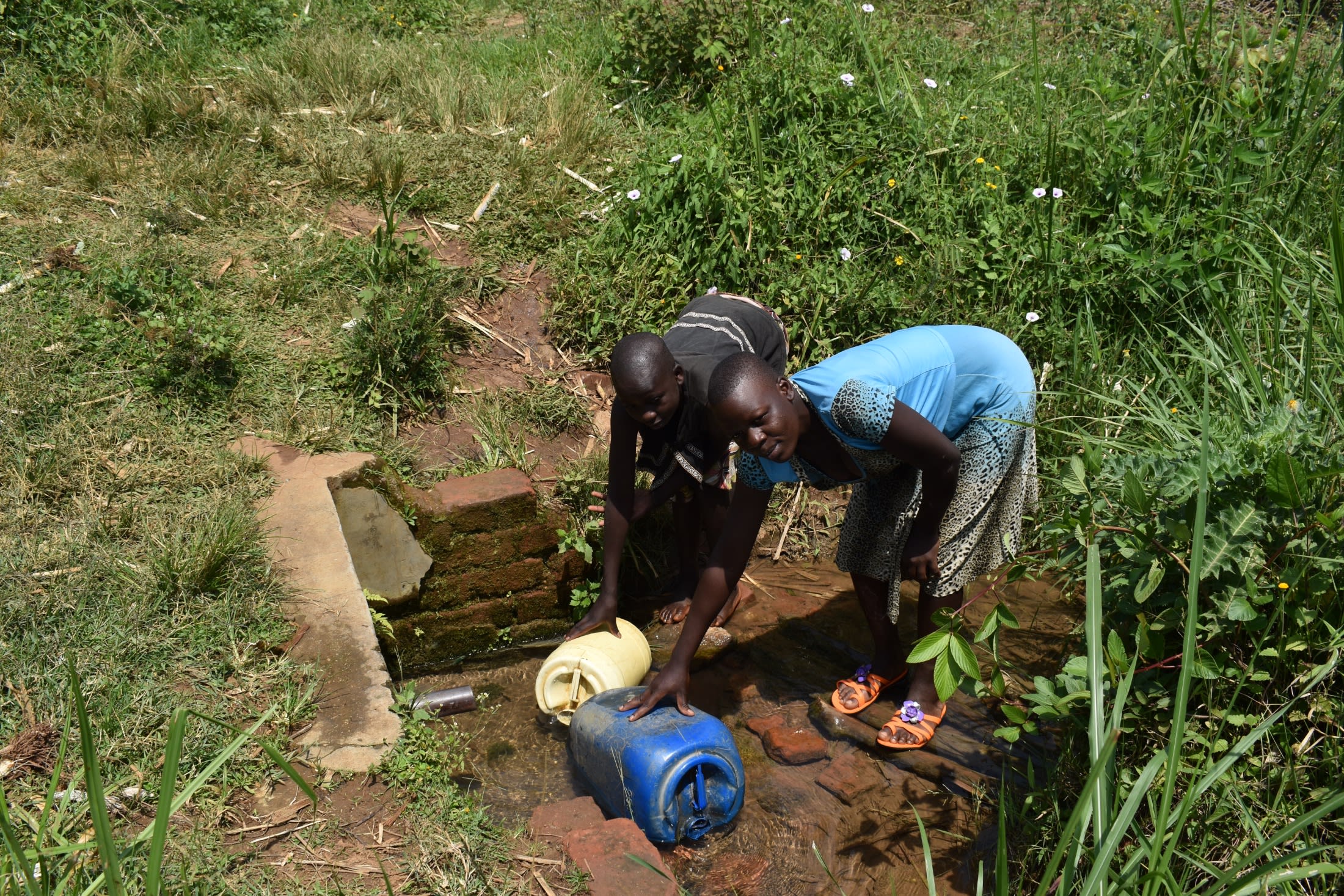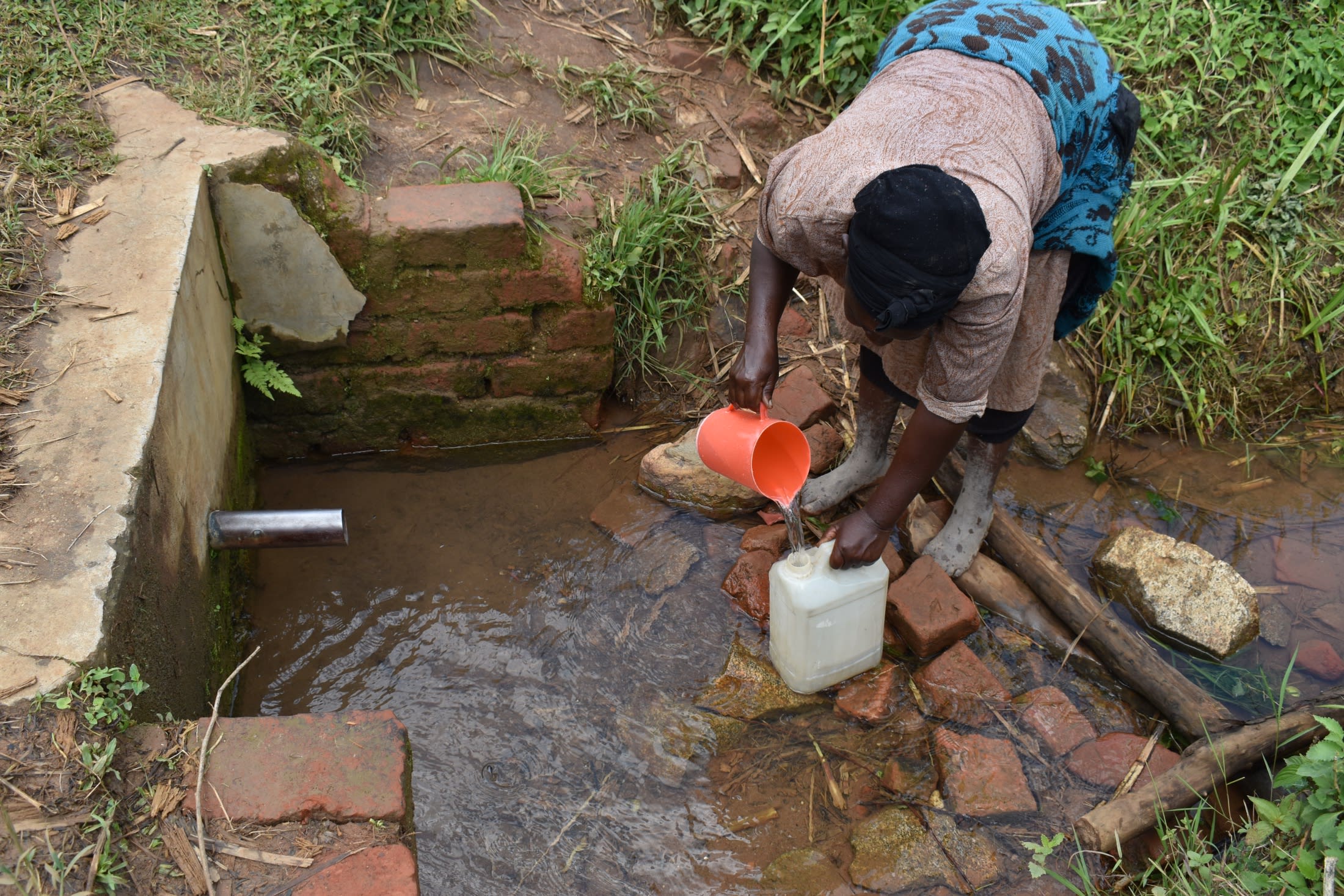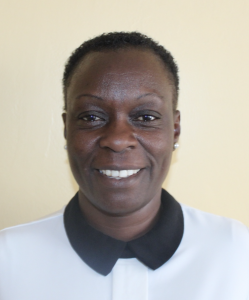Most of the 210 community members of Masukutse spend the majority of their time sugarcane farming. It is a family affair, as wives play a vital role alongside their husbands, but unfortunately, they do not have as much time as they need because they must also collect water for the family.
The community is fortunate to have access to consistent water at Pius Misango Spring. Yet, because there was an attempt to protect the spring previously done incorrectly, it still has problems that cause people to get sick and steal their valuable resources of time and energy.
It is a small spring surrounded by mud, rocks, and grass that becomes treacherous to navigate, especially in the rainy season. It takes care to climb into the catchment area safely and back out with full containers, leading to delays and long lines, wasting valuable time meant for other productive things.
"I normally feel bad when I go to fetch water and find [a] big crowd at the spring. It makes me to do my homework late," said Brian M. (pictured below), age 15.

The water pipe is not high enough to place collection containers under, so people must lay their containers in the water to fill them while they stand ankle-deep in the water or use a scooping container. Not surprisingly, this means they are collecting contaminated water from dirty containers, whatever was on their shoes and feet, along with contaminants from the rocks and the standing water.

After heavy rains, community members often have to wait until the next day to collect water because the water is so muddy.
The contaminated water is causing people like Loi Angesa (pictured below scooping water), a 58-year-old farmer, and her family, to get seriously ill. "It was in 2019 February when my husband started feeling unwell. After taking him to a government hospital, he was diagnosed with typhoid, which took [a] long time to recover. We used a lot of money for buying medicine."

In this community that is working hard to make ends meet, unexpected medical bills due to drinking the water are a burden they cannot afford to carry.
Protecting the spring will ensure community members can safely and timely access the water they need. As a result, they will gain the necessary time and energy to improve their daily lives.
What We Can Do:
Spring Protection
Protecting the spring will help provide access to cleaner and safer water and reduce the time people have to spend to fetch it. Construction will keep surface runoff and other contaminants out of the water. With the community's high involvement in the process, there should be a good sense of responsibility and ownership for the new clean water source.
Fetching water is a task predominantly carried out by women and young girls. Protecting the spring and offering training and support will, therefore, help empower the female members of the community by freeing up more of their time and energy to engage and invest in income-generating activities and their education.
Training on Health, Hygiene, COVID-19, and More
To hold trainings during the pandemic, we work closely with both community leaders and the local government to approve small groups to attend training. We ask community leaders to invite a select yet representative group of people to attend training who will then act as ambassadors to the rest of the community to share what they learn. We also communicate our expectations of physical distancing and wearing masks for all who choose to attend.
The training will focus on improved hygiene, health, and sanitation habits in this community. We will also have a dedicated session on COVID-19 symptoms, transmission routes, and prevention best practices.
With the community's input, we will identify key leverage points where they can alter their practices at the personal, household, and community levels to affect change. This training will help to ensure participants have the knowledge they need about healthy practices and their importance to make the most of their water point as soon as water is flowing.
Our team of facilitators will use a variety of methods to train community members. Some of these methods include participatory hygiene and sanitation transformation, asset-based community development, group discussions, handouts, and demonstrations at the spring.
One of the most important issues we plan to cover is the handling, storage, and treatment of water. Having a clean water source will be extremely helpful, but it is useless if water gets contaminated by the time it is consumed. We and the community strongly believe that all of these components will work together to improve living standards here, which will help to unlock the potential for these community members to live better, healthier lives.
We will then conduct a small series of follow-up trainings before transitioning to our regularly scheduled support visits throughout the year.
Training will result in the formation of a water user committee, elected by their peers, that will oversee the operations and maintenance of the spring. The committee will enforce proper behavior around the spring and delegate tasks that will help preserve the site, such as building a fence and digging proper drainage channels. The fence will keep out destructive animals and unwanted waste, and the drainage will keep the area's mosquito population at a minimum.



 Rehabilitation Project
Rehabilitation Project




































